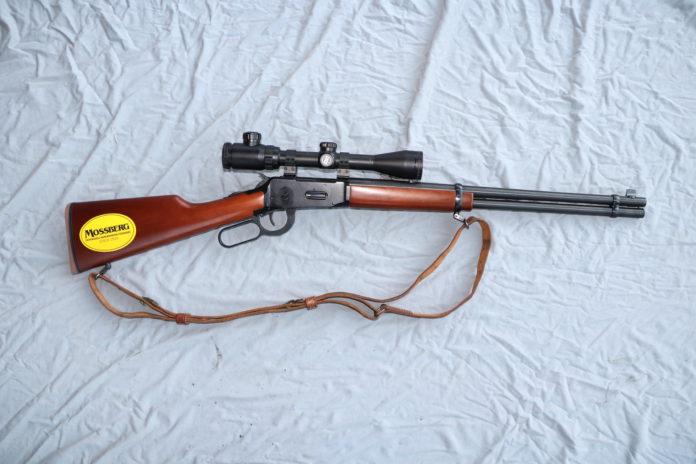
BY STEVE COMUS
Want to add a little zest to a hog hunt? Do it with the iconic .30-30 Win. cartridge. Under many circumstances, the old .30-30 can be the best of all choices anyway.
I have fond memories of using the .30-30 for hunting in California. That was back in the very early 1970s, not long after I moved to the Golden State after spending some time during the ‘60s in Uncle Sam’s Army (but that’s another story).
The first rifle I bought after moving to California was a Model 1895 Chilean Mauser in 7x57mm that I purchased at the Arroyo gun shop in the Pasadena area. I used it, as issued with the military sights, to take some blacktails in Ventura County.
Then I found a Savage Model 99 in .30-30 advertised in the classified ads in a local newspaper. That owner and I came to an agreement and the rifle was mine for $40.
I used it for a number of seasons before I picked up a sporterized Model 1917 U.S. Enfield rifle in .30-06 Springfield at the Great Western gun show. Heck, I used the Savage and the Enfield for hunting in California for a decade or so until I joined the staff of WON – which then had me using a lot of different rifles and cartridges routinely. But I digress.
It may seem counterintuitive in the age of long-range shooting and hunting to talk about a 125-year-old cartridge that pretty much fizzles out for big game not far beyond the 100-yard line. But that doesn’t mean the .30-30 should be overlooked.
The secret to the continued success of the .30-30 lies in the rifles made to shoot it. They tend to be relatively light, easy to carry and help the hunter keep from getting in his or her own way when it is time for the shot.
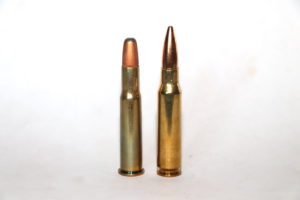
Usually when folks think about the .30-30, they envision the rifle in which it was introduced – the Winchester Model 1894 (although the ’94 rifle was introduced in 1894, introduction of the .30-30 in it didn’t happen until a year later).
When introduced, the .30-30 was designated .30 WCF (Winchester Center Fire), or .30/30/160 (it was .30 caliber, featured 30 grains of smokeless powder and shot a 160-gran soft-point bullet). The metric designation for the .30-30 is 7.62x51R (the .30-30 is a rimmed cartridge, which accounts for the “R” in the metric designation).
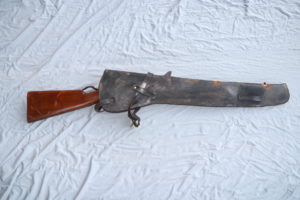
Over time, the two most common bullet weights for the .30-30 became 150 and 170-grain flat-point or round-nose. Because most lever-action rifles have tubular magazines, the use of pointed bullets is dangerous. Recoil from a shot can cause the nose of one bullet in the magazine to set off the cartridge in front of it.
Typical muzzle velocities are more or less 2,400 feet per second for 150-grain bullets and 2,200 fps for 170-grain bullets. Most of the non-lead bullets on the market for the .30-30 are 150-grain. Such loaded ammo includes the Barnes TSX 150-grain and the Federal Trophy Copper 150-grain.
Although it is nice to catch wild pigs in the open and shoot them with a scope-sighted centerfire rifle at distance, the truth is that there can and should be opportunities to engage the hogs closer, often on the run.
Driven game hunts as they are known in Europe are not typical on this side of the pond, but when kicking pigs out of brush-choked narrow canyons and arroyos, shots often are under 100 yards and the handling dynamics of the .30-30 rifles is really handy in such situations. It is not terribly different from shooting moving targets with a shotgun.
Certainly the .30-30 has enough punch within 100 yards to bag any hog out there, assuming a well-placed bullet. And the nice thing is that with a lever gun, quick follow-up shots also are easy. Just get used to using the lever action from the shoulder.
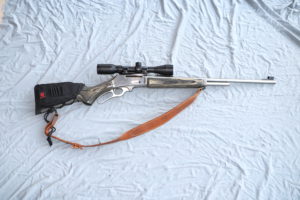
Remember to rotate the lever fully forward before returning it lest there be a “short stroke,” which will result in the next round not cycling into the chamber properly.
The way lever actions work, most of the stroke of the lever is used to pull the spent case out of the chamber and then eject it. The final distance of the rearward cycle of the bolt (forward cycle of the lever) activates the elevator that brings the next round up so that when the lever pushes the bolt forward, the bolt puts the new round into the chamber.
A lever stroke that does not put the next cartridge in line to go into the chamber can either hang-up on the new round that is not fully elevated, or it will result in the bolt going over the top of the next round and not chamber anything when the action is closed.
The cure is to assure that the lever is fully rotated forward before it is returned to close the bolt. It takes a little concentration at first but becomes a natural thing quickly.
And there is no reason not to take more than one rifle on hunts where different scenarios are likely. For example, take a scoped rifle for pigs caught out in the open and a lever gun for kicking them out of the bush. Total fun.
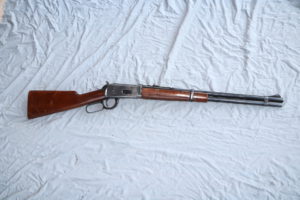
When discussing lever rifles, it is proper to note that there are other cartridges chambered in lever guns that also can work great when hogging. One is the .45/70 Govt., a 148-year-old round that just keeps working, and the .35 Remington, also an oldie that refuses to die.
Or there are still a lot of lever guns on the used market chambered for the .32 Winchester Special. That cartridge is almost identical to the .30-30, except the bullet diameter is 0.320-inch in diameter, compared to 0.308-inch for the .30-30.
Early Model 94 rifles chambered in .32 Special had a different kind of rifling, designed to handle cast bullets. It was unclear then which kind of bullet would eventually win out, so Winchester hedged its bets. But the performance of the two cartridges is virtually identical.
Meanwhile, hunting hogs with the .30-30 can be a real hoot. As long as it is used at distances of 100 yards or less, it can be a great bet for wild pigs.



